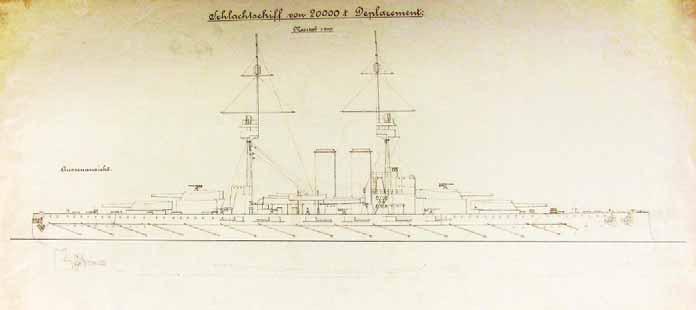Political and Financial Background The first steps were taken in 1906 to pave the way for the new battleships class. On 4 July 1906, Montecuccoli declared before the Austrian Reichsrat if the British Dreadnought were not a unique ship Austria-Hungary should build 20,000 ton battleships to follow the international trend.158 In November 1906, during the delegation’s meeting session in Budapest Montecuccoli who was staying in the Hungarian capital sent his secretary, Korvettenkapitän Alfred von Koudelka to find out the opinion of the Hungarian politicians about the new battleships. Koudelka negotiated with Hungarian delegation members who backed the plan. On the next day Koudelka met with members of the Hungarian government. Prime Minister Sándor Wekerle told him that Hungary would assert to the dreadnoughts if one third of the cost would be spent in Hungary. Commerce minister Ferenc Kossuth added that one of the battleships should be built in the Danubius shipyard in Fiume. When Koudelka gave an account of his negotiation with the Hungarian government to Montecuccoli in the hotel room the Marinekommandant allegedly cried
out: “That battleship will be never completed!” Allegedly (by his own account) Koudelka saved the situation by proposing that it should build four battleships instead of three and even if the Danubius would have serious problems the Navy would possess a class of three battleships.159 After the first, preliminary steps the political and propagandistic offensive started in 1908. In February 1908, Montecuccoli presented a memorandum of thirty pages to the Emperor and both governments. The memorandum contained an ambitious fleet program of sixteen battleships, twelve cruisers, twenty-four destroyers, seventy-two torpedo boats and twelve submarines. He urged to build four 18,000-19,000 ton battleships stating that Italy had hostile intentions. He also stated that Italy had started to build four 19,000 ton battleships primarily against the Monarchy. Montecuccoli lamented that among the European Powers the Monarchy was spending the least on the Navy. He stated that in 1907 Italy had spent 2.41 Kronen per capita on its Navy while the Monarchy had spent only 1 Krone per capita.160 In fact, there were no Italian battleships under construction in 1908 and the Monarchy spent 1.7 Kronen per capita on
29 The first Italian dreadnought, the Dante Alighieri armed with twelve 30.5 cm/46 guns in four triple turrets
— 66 —






























